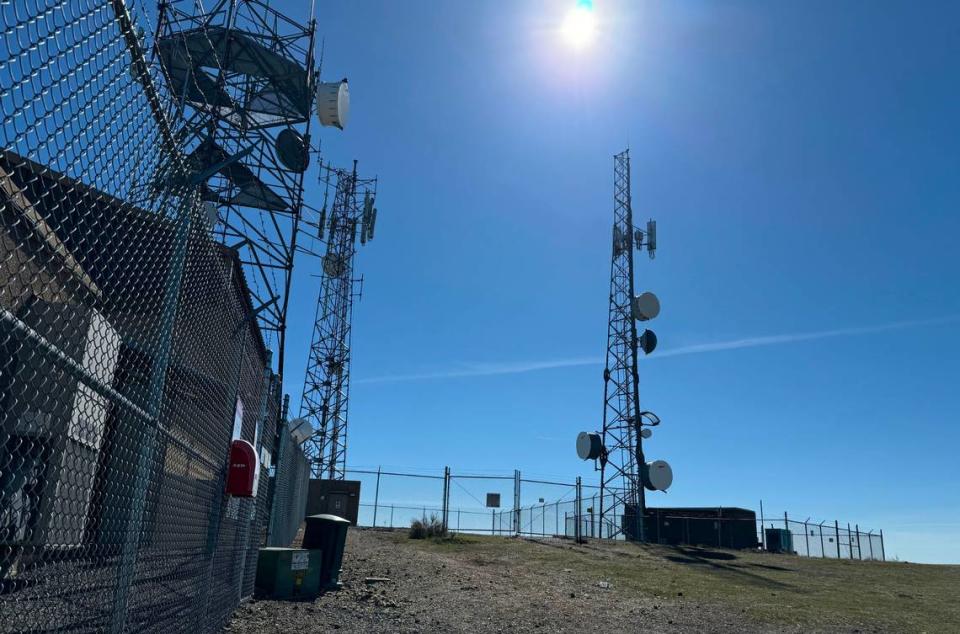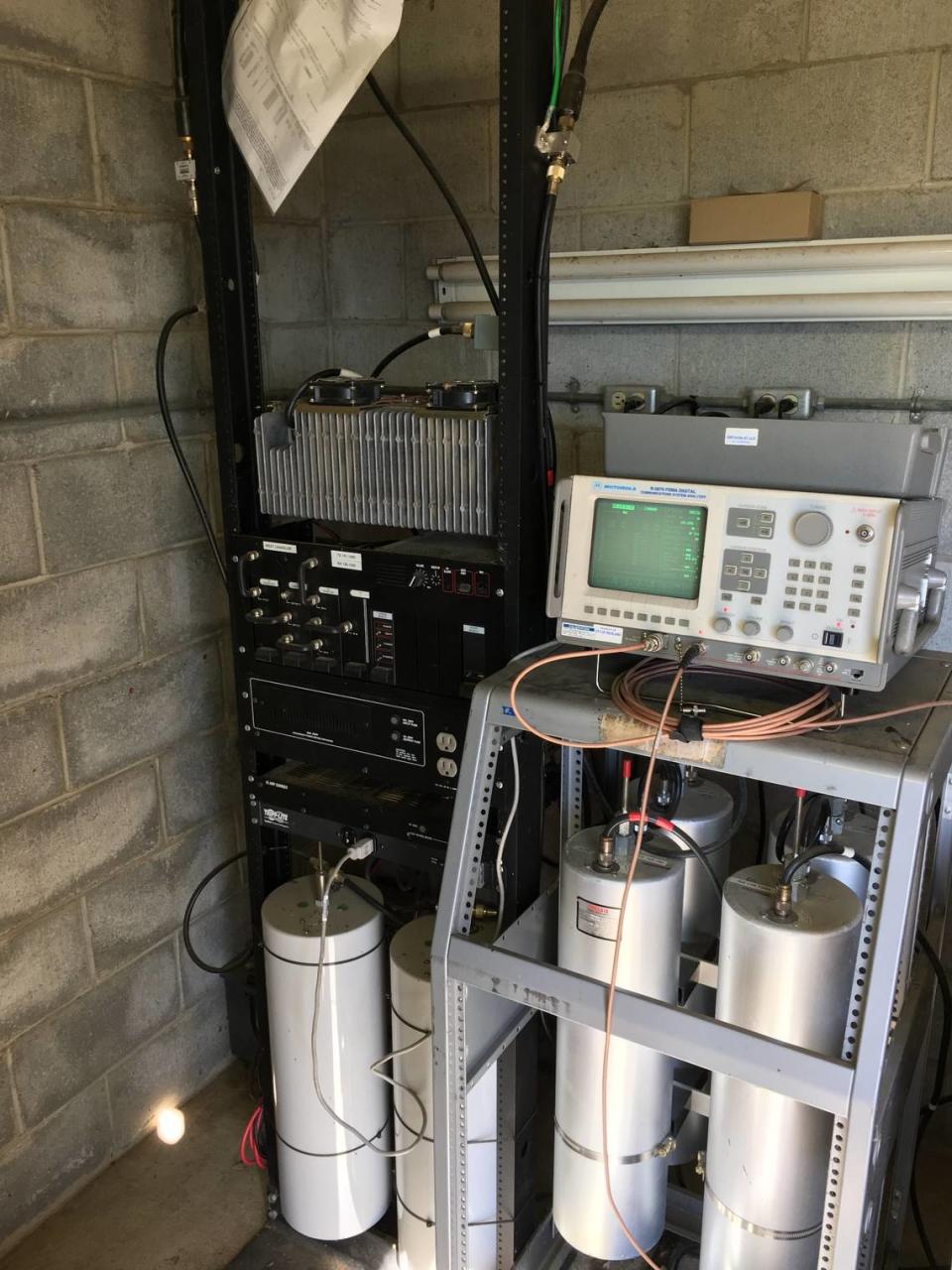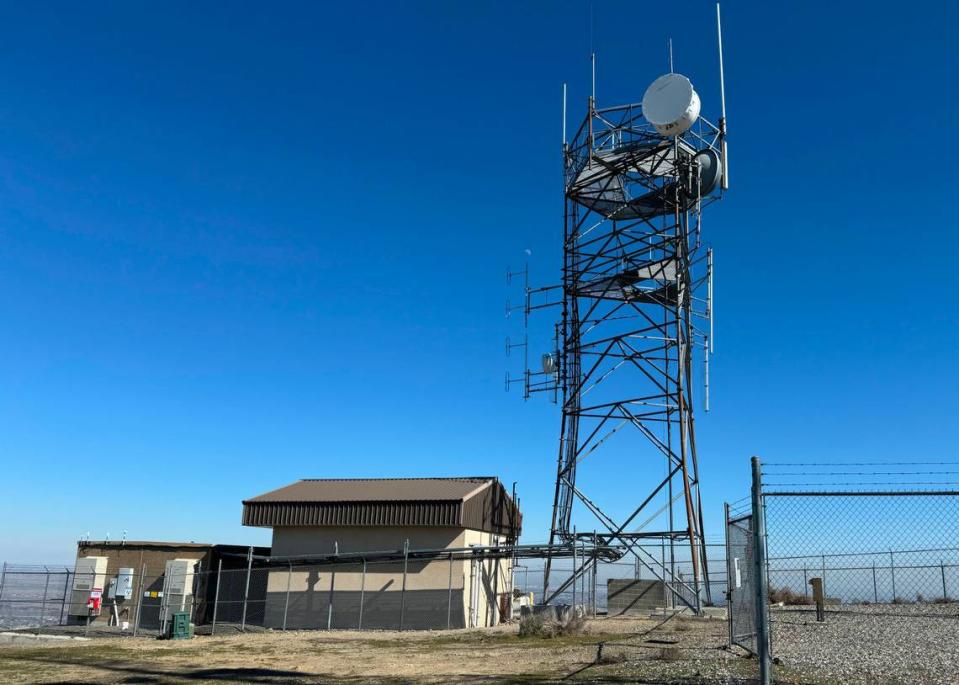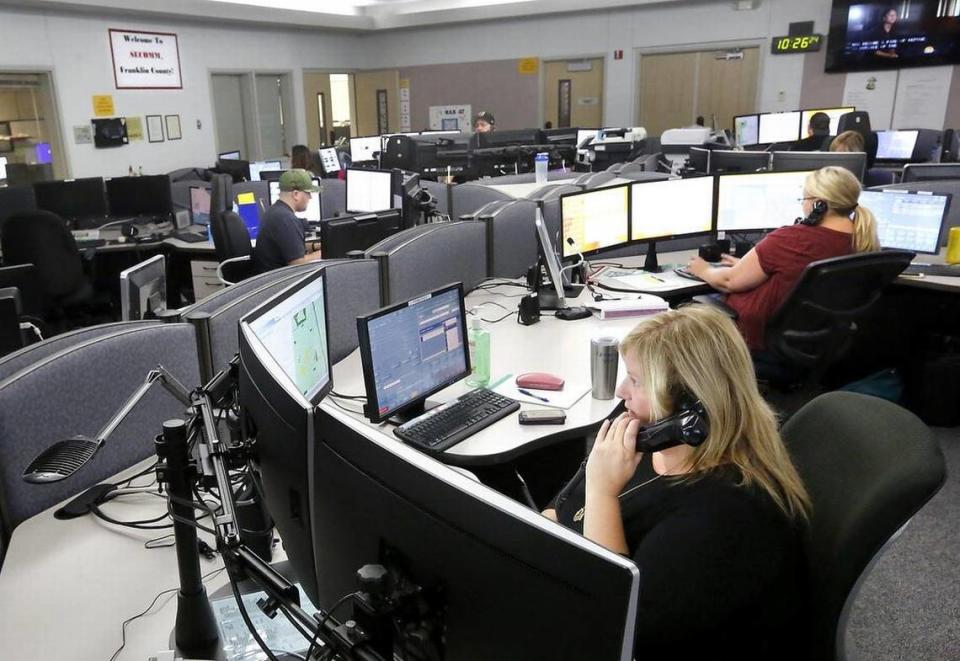‘Built with parts from eBay.’ Tri-Cities leaders rush to replace failing 911 system
Tri-Cities leaders say it’s not a matter of “if” but “when” our area’s aging 911 communications infrastructure will fail.
Entire areas of the bicounty area could be left without the ability to communicate instantly if that happens.
That’s left county commissioners and city councils scrambling to find money for a two-part upgrade that will cost more than $20 million. And they may need to add a new sales tax.
The current system is virtually obsolete, with huge portions built with parts officials bought online off eBay and replacement pieces can no longer be found.
Earlier this year the Southeast Communications Center, or SECOMM, officials returned to leaders in Benton and Franklin counties, as well as Kennewick, Richland and Pasco, to stress that a full overhaul is needed.
Otherwise, the towers and radios that emergency responders rely on to protect a population of more than 316,000 will fail.
SECOMM is the region’s consolidated dispatch center, set up through a joint agreement for both counties in 2018. While there are certain funding sources that help pay for emergency dispatching services, the money doesn’t pay for infrastructure and equipment, such as towers and hand-held radios.
Jay Atwood, Benton County’s emergency services director, told the Tri-City Herald this isn’t coming as a surprise to Tri-Cities leaders. They’ve been working on this since SECOMM came online in 2018, but the COVID-19 pandemic set the effort behind and now it’s nearing a crisis point.
The risk of the current system failing is so severe that Richland Fire Chief Thomas Huntington told the Herald that if a tower goes down, even if they’re able to patch through to other areas to keep communications online to a lesser degree or use cell or two-way radios, it could take minutes just to coordinate emergency response.
“We’ll cannibalize the system to keep the higher priority working,” he said. “But if we lose a link, we’re really talking about a reconfiguration or loss of geographic coverage.”
“Without the ability for dispatch to talk to the end user, all of those (workarounds) are just adaptations. It’s really going to slow down the notification process if there’s an emergency. The bigger risk is someone having a heart attack in their living room in the middle of town, it could take 2 1/2 minutes to get a response.”
In emergency response, every second matters.
And in many rural parts of the counties cell phone coverage is unreliable and satellite systems like Starlink are still years out from being a viable option to replace towers and transmitters.
“There’s a very real possibility someone’s house could be on fire 8 to 10 minutes down the road from a fire house and we wouldn’t get a (response in time),” Huntington said.

Preventing a crisis
At meetings across the Tri-Cities in recent weeks, city and county leaders agreed to update an interlocal agreement that helps lock in a lower price and secure funding for the first step in the upgrades before Sunday’s March 31 cutoff date.
The first portion of the project that was approved leaves the five stakeholders with a vendor’s deadline to find about $900,000 each before next spring.
That part of the project involves replacing failing microwave transmitters on mountaintops across the region.
The transmitters allow signals to be bounced directly from tower to tower, enabling near-instantaneous communication. It’s also how communication gets to SECOMM where dispatchers reroute calls and manage radio channels for emergency responders, including police and firefighters.
Right now, the Franklin County Sheriff’s Office, Connell Police and all firefighting agencies in the Tri-Cities are using an obsolete VHF radio system, preventing them from direct communication with police and other agencies without emergency dispatchers’ help.
The rest of the police departments in the area and the Benton County Sheriff’s Office use a newer 800 MHz system. Pasco police moved onto that system in 2015 to improve inter-agency communication.
Because the agencies are on different radio formats, they need SECOMM to help coordinate.

The equipment to run these VHF-based towers is also failing and parts are no longer available. That means, for example, a tower in a rural area could fail at any time and they wouldn’t be able to get it back online, leaving their communication pathways hobbled, Michael Namchek, a telecommunications engineer, told Franklin County Commissioners during a recent presentation.
Namcheck currently works for the city of Richland, but before that he helped build Franklin County’s emergency communication network.
Transmitter network
About 50 different transmitters and receivers are set up on ridges and mountain tops across the region, creating a communications web spanning more than 3,000 square miles. It’s used by two dozen different police, fire and emergency services agencies.
The overall goal is to get everyone off of the systems that are currently failing and onto the same radio types.
“If a microwave system in (the area) fails and I cannot put it back together, you are not talking in Kahlotus,” Namchek said. “If you have to fight a fire and Kahlotus is burning down, for the third time since I’ve worked here, it is going to burn down. They cannot communicate together without that system.”
Namcheck said that system was out of date when it was built, and was intended to be upgraded within a few years. That never happened though. Now the parts he once relied on finding on eBay are no longer available.
“They were just throwing up strings and cans out there, there wasn’t a lot in place (in 2000),” Namchek said. “This equipment was all purchased from eBay, and anywhere I could find, to build this system.”
Obsolete systems
These microwave towers are a complex system. It starts with a microwave transmitter, the drums often seen on cell phone towers, which lead into a computer and transmitting equipment.
The first $4.5 million will replace those drums and the parts used to connect them to electronics that help reroute the signals.
Parts for the older VHF system haven’t been made in years. While Benton County is largely already upgraded, they still have more than a half dozen VHF systems across the county that fire departments use.
Many of the VHF setups still use monochrome monitors, the old black and green displays that haven’t been manufactured in decades.

Atwood said the microwaves and VHF components are both failing on a regular basis, and while in the past they’ve been able to find replacements online, the market vanished during the pandemic. For a while they made due thanks to parts donated when Walla Walla County upgraded their own system.
Now those also have run out.
Namchek told Franklin County that while they could do a total overhaul of their antiquated VHF system, the technology format itself would be obsolete before the end of the decade, and they’d be back at square one.
It would also cost nearly as much as just moving to the 800 MHz system, he said.
The second, larger portion of the upgrade, will see all of the other electronics, transmitters and repeaters on Franklin County hilltops upgraded to be brought in line with the rest of the region. That’s all of the equipment that lives in the small buildings you see next to the towers in places like the top of Badger Mountain.

Then most of the two-dozen agencies in the counties will need upgraded radio systems that work on the 800 MHz signal.
That portion is the heavier lift, Huntington said.
It’s going to cost $15 million to $18 million. Earlier initial estimates had the price tag at nearly $27 million just for that portion, but Huntington said that was a worse-case estimate based on if the counties had no existing towers already in place.
Huntington said another major benefit of the 800 MHz system is that it’s digital and far more robust, allowing for greater numbers of channels and easier coordination. The old VHF system has limited channels and they’re typically used by only one agency at a time.
So in a major emergency, under the 800 MHz system, it is much easier to move all first responders working the call to a single channel where they can coordinate without having to worry about cross-traffic.
Another major benefit of this system, which is administrated by Motorola, is that Benton County’s contract has upgrades built in.
Huntington said the agreement replaces software and hardware every two years, and that agreement will be in place systemwide once the upgrades are complete.
“We wouldn’t ever be in this position again, we would always have the latest and greatest on the mountain tops,” he said.
He said there really isn’t a “Plan B,” the current infrastructure isn’t just at the end of its life cycle, it’s obsolete.
Huntington said there is a real concern the equipment won’t even last long enough for the upgrades to be finished.
“Remaining status quo is not really an option,” Huntington said. “We’re chasing every funding option we can get our hands on. Big grants, small grants, potentially even loans.”

How will it be paid for?
The need is so dire that Franklin County, which is facing a potential financial crisis next year, has pushed it to the forefront.
Nearly every decision the county is making for spending is now being viewed through the lens of the 911 communication system upgrades being their top priority.
Where the stakeholders could have previously relied on American Rescue Plan funds to supplement a need like this, those funds ended this year.
Allocations have to be spent by the end of 2024, meaning they can’t put the money in an account to wait for payment on the project to come due.
So far, SECOMM has been able to lobby for $2 million in congressional funds, which took the first portion costs down to $4.5 million. They’ve also secured about $250,000 from the state of Washington.
They’re beginning to look for more grant opportunities in order to reduce the burden on local agencies.
911 sales tax
There is one option though that the counties could use to pay for the project — a 911 communication sales tax.
Neither county currently has the tax.
It’s different from the 911 surcharge on phone bills, which is a state tax that helps provide a name, address and phone number any time someone calls 911. All other 911 communication needs are paid for on the local level.
Counties have the option of calling for a vote to approve up to 0.2% sales tax increase, or 2 cents on a $10 purchase. The E-911 sales tax revenue can only be used for emergency communications systems and facilities.
And it’s a completely separate item from the public safety sales tax that both counties currently collect.
If commissioners in each county were to put that sales tax on a future ballot and it is approved, they could potentially pay the full amount upfront through bond funding, with the sales tax paying it off.
Franklin County is looking to set up a workshop soon to decide whether to place the sales tax on the ballot.
Huntington said that even though Franklin County would need more infrastructure work, it would benefit both counties and every municipality, so they’re working together to find a solution that’s fair and affordable for everyone.
In the meantime, they’re doing everything they can to keep the current system running, hoping it will last long enough to be replaced.
“Some of these failures have a cascading effect where a single part will fail, but because of that failure or a surge, will cause multiple components to fail,” Huntington said. “There’s a lot of varied interest, collaboration and trust in each other to get this over the finish line.”

